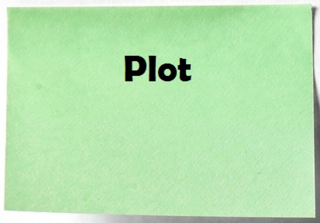Score story plot points with head fake
Many readers  enjoy books in which they attempt to solve the story���s central problem before the main character does. To add to such readers��� pleasure, authors sometimes will create ���diversions��� when plotting the book.
enjoy books in which they attempt to solve the story���s central problem before the main character does. To add to such readers��� pleasure, authors sometimes will create ���diversions��� when plotting the book.
These diversions are known as head fakes, as they���re plot actions that appear significant but really aren���t. The term is borrowed from sports when an athlete moves his or head one way to signal direction but then actually goes the other way. It was coined by CSFW���s David Smith. Head fakes often are used in mystery stories or whenever the reader is solving the story���s puzzle alongside the main character.
Any head fake in a story ought to fit into the plot, though. Usually it���s an avenue that the main character explores but later realizes or decides is a dead end. At least one clue should be dropped into the plot to suggest that avenue will go nowhere.
Limit the number of head fakes in your story. Using too many of them is like crying wolf. The reader will feel that you don���t really have a plot and frustrate with the story might quit reading it.
Professional Book Editor: Having your novel, short story or nonfiction manuscript proofread or edited before submitting it can prove invaluable. In an economic climate where you face heavy competition, your writing needs a second eye to give you the edge. Whether you come from a big city like Raleigh, North Carolina, or a small town like Strong, Maine, I can provide that second eye.
<A HREF="http://ws-na.amazon-adsystem.com/widg... Widgets</A>
Related articles
 Today's Writing Inspiration: Your first written sentence is the foundation of all of your dreams
Today's Writing Inspiration: Your first written sentence is the foundation of all of your dreams Try 'taster book' if new to self-publishing
Try 'taster book' if new to self-publishing Consider using counterplotting in your novel
Consider using counterplotting in your novel Questions to ask yourself when plotting a story
Questions to ask yourself when plotting a story Consider using episodic fiction plot structure
Consider using episodic fiction plot structure



